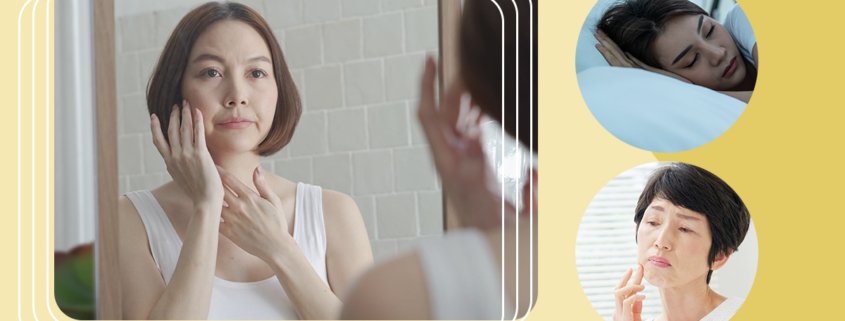Factors That Can Cause Changes To Your Skin
Aside from the usually discussed ones, what are the other factors that can cause changes to your skin?
There are plenty of other reasons your skin ages as you get older.
Additional factors that can cause changes to your skin:
Dry and itchy skin
Dry skin is common in later life. The loss of sweat and oil glands as we age may worsen dry skin. Anything that further dries the skin — such as overuse of soaps, antiperspirants, perfumes, or hot baths — will make the problem worse.
Dry skin itches because it is irritated easily. If your skin is very dry and itchy, this condition can affect your sleep, and cause irritability, it could be a symptom of a disease. For example, diabetes and kidney disease can cause itching. Some medicines make the itchiness worse. In that case, be sure to see your healthcare provider to see what the cause may be and any potential treatment possibilities.
Obesity
Excess weight causes the skin to stretch and decreases the strength and luster of the hair and nails. It also causes dark patches on the skin (acanthosis nigricans), skin tags, stretch marks, and varicose veins.
Obesity has been linked to other skin conditions, including psoriasis and cellulitis. Although patches of psoriasis (itchy, dry, red patches) can occur anywhere in the body, they frequently develop on the scalp or near the hairline. Folds of excess body skin can rub against each other and cause skin irritation, blisters, chafing, skin rashes, and skin infections.
Smoking
People who smoke tend to have more wrinkles than nonsmokers of the same age, complexion, and history of sun exposure. The reason for this difference is unclear. It may be because smoking interferes with normal blood flow in the skin.
Gravity
When the skin loses its elasticity, gravity causes drooping of the eyebrows and eyelids, looseness and fullness under the cheeks and jaw (jowls and “double chin”), and a lengthening of the ear lobes.
Daily facial movements
Yes, laugh lines are (sort of) real. Lines on the face become more visible after the skin starts losing its elasticity, usually as people reach their 30s and 40s. Lines may appear horizontally on the forehead, vertically on the skin above the top of the nose (often called 11 lines), or as small curved lines on the temples, upper cheeks, and around the mouth.
Sleeping position
How you sleep can play a role, too. Sleep creases are commonly seen on the side of the forehead, starting above the eyebrows to the hairline near the temples, as well as on the middle of the cheeks. These result from the way the head is positioned on the pillow and may become more visible after the skin starts losing its elasticity. Changing your sleep positions may improve these sleep creases or prevent them from becoming worse.
If you’re noticing some signs of aging skin, you can have it checked so it can be taken care of. We can help you and your skin age gracefully.
Schedule a consultation with our skin experts! Call our Patient Care Lines: (+632) 7-368 5238 l (+63) 917 862 7454 l (+63) 921 217 0517 for inquiries, questions, and appointments, or talk to our consultants via LiveChat here on our website.





Leave a Reply
Want to join the discussion?Feel free to contribute!